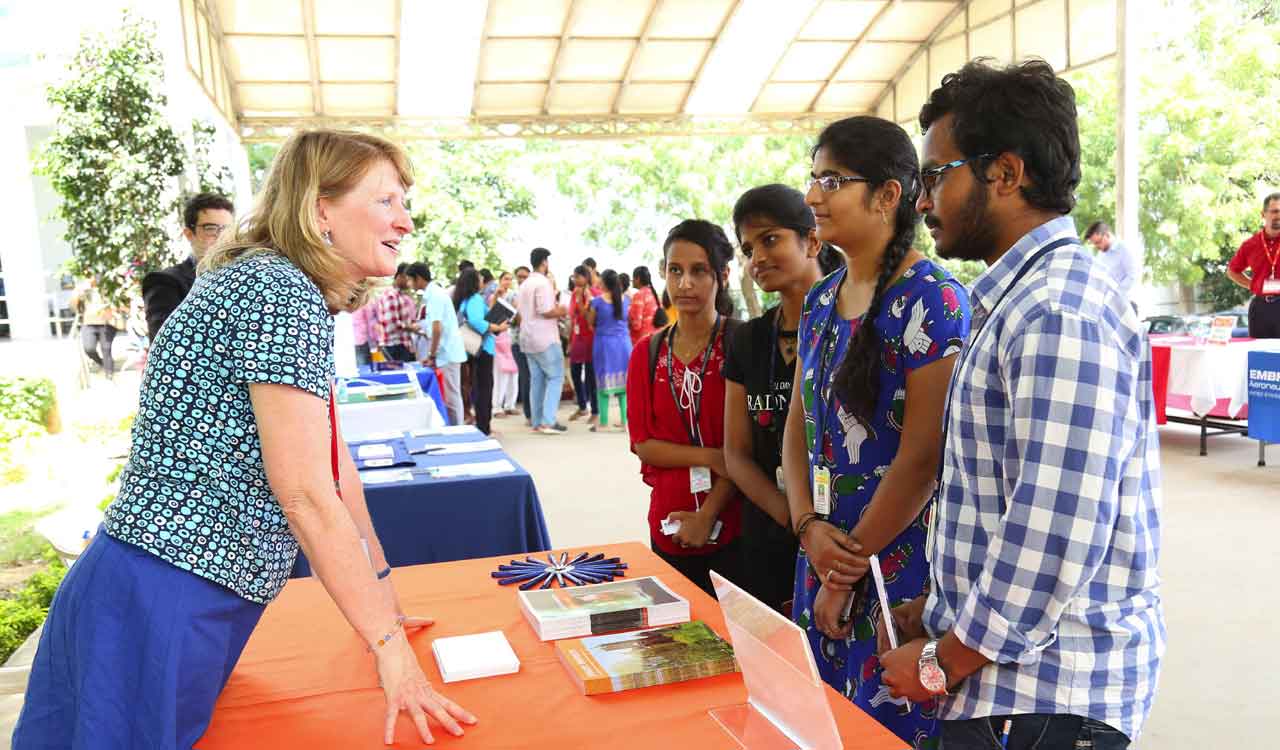To apply for any of these visas, students must first be accepted to an accredited institution certified by the Student Exchange and Visitor Program (SEVP).
Published Date – 13 April 2024, 04:24 PM

Hyderabad: International students who want to study in the United States need to apply for a student visa. The U.S. government offers three types of visas for study: F, J, and M.
The F-1 visa is the most common, and is for full-time academic studies at an accredited college, university, or other educational institution in the United States.
The J-1 visa is for students who want to participate in exchange programs, such as study abroad programs, research programs, and cultural exchange programs.
The M-1 visa is for those who want to pursue vocational or non-academic studies in the United States.
To apply for any of these visas, students must first be accepted to an accredited institution certified by the Student Exchange and Visitor Program (SEVP). It is important to note that even if an institution is SEVP-certified, it may not hold national or regional accreditation. The U.S. Department of Education (https://ope.ed.gov/dapip/#/home) and the Council for Higher Education Accreditation (https://www.chea.org/search) databases list accreditation status for all U.S. institutions.
For J-1 visa applicants, accredited institutions designated by the Bureau of Educational and Cultural Affairs place participants in academic exchange programs. Recognition of course credits and degrees by other institutions and U.S. and international employers is linked to an institution’s accreditation.
Once accepted into a SEVP-certified school, students will be registered for the Student and Exchange Visitor Information System (SEVIS) (https://www.ice.gov/sevis/overview) and must pay the SEVIS I-901 fee. The SEVP-approved school will then issue Form I-20, which the student will need to apply for a student visa at a U.S. Consulate.
Students should present their Form I-20 to the consular officer during the interview. International students can bring their families (spouses or children) with them to the United States while they study. Families must also enroll in SEVIS, obtain Form I-20s from SEVP-approved schools, and apply for a visa. However, families do not need to pay the SEVIS fee.
International students can visit the U.S. Immigration and Customs Enforcement (ICE) Student and Exchange Visitor Program (https://www.ice.gov/sevis/overview) to learn more about SEVIS and the SEVIS I-901 Fee.
It is important to note that two separate U.S. government agencies are involved with international student arrival and status while studying in the United States.
The State Department is responsible for the visa application and issuing the visa. Once a visa holder arrives in the United States, the U.S. Department of Homeland Security takes over as the responsible agency for entry into the country and issuing and enforcing international student regulations.
– U.S. Consulate General Hyderabad


